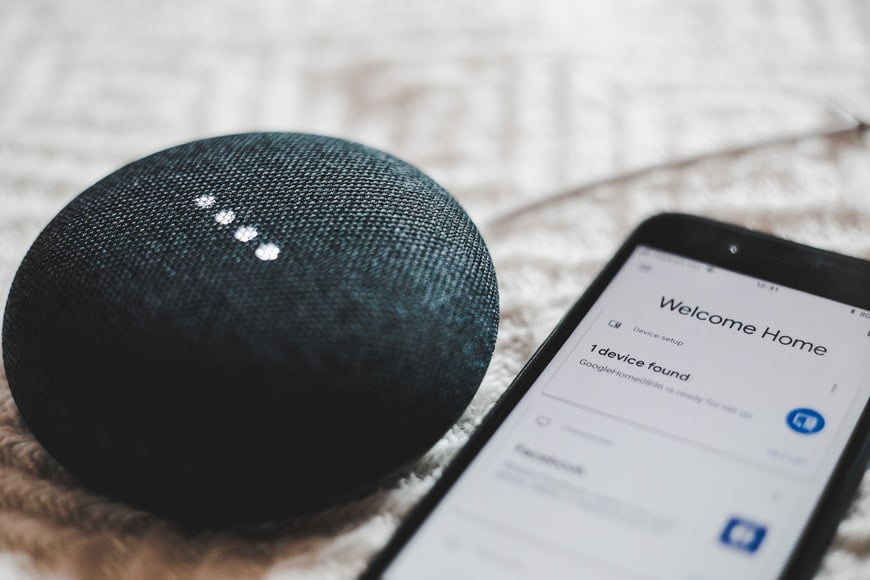The Future of IoT Smart Lighting
by Sumona Technology 09 November 2021

The Internet of Things is a complex system that allows devices to communicate with each other. This is necessary in order to automate some processes. To make human life easier.
What is the Internet of Things?

This technology is gaining more and more popularity. Many companies do business in this area. For example Microsoft, Google, Amazon, Cisco, and others. Progress is progressing very quickly.
This technology is used in many areas of human life. The areas of application of the Internet of Things are not limited to industry and medicine. It can also be used at home and in an urban environment. Here’s a useful application of IoT smart lighting. Today we will talk about IoT smart lighting. Enjoy reading. We hope you learn a lot.
General information

IoT smart lighting – lighting technology. It aims to increase the energy efficiency and comfort of using artificial light sources. This is achieved through the use of automated control, light sensors. As well as opportunities for planning, emphasizing, and modern ways of interacting with humans and other technology.
Lighting automation systems appeared at the end of the 20th century, but the emergence of “smart lighting” can only be dated to 2010-2012 when the active use of LED lamps began. LED technology made it possible to reduce the energy consumption of lighting by at least 5 times, compared to incandescent lamps, and also significantly (up to 100 times) increase the durability of one used source.
Because of these properties, LEDs have replaced even fluorescent lamps everywhere. In 2015-2017, active equipping of light sources with communication modules began. This allows devices to closely interact with IoT technology and the user, which expands the capabilities of the latter. The ability to simply adjust brightness and color, thereby focusing on a specific object, opens up possibilities for art, safety, and functionality in everyday tasks.
Conditions
The main light sources used are LED lamps.
Used for control: switches, dimmers, sensors (light, motion, infrared, sound), communication modules (Bluetooth, WiFi, radio signals), HUB ports.
Connected to programmable and intelligent control systems, smartphones, and IoT.
Application cases
The use of light sensors in the lighting circuit makes it possible to implement the simplest function of “smart lighting” – to freely turn on and off the lighting when needed, which is actively used in street lighting. By adding motion sensors and infrared cameras, the light will start to turn on when a person appears or is in the room.
Application – public corridors, toilets, bus stops, waiting rooms, etc. By connecting the lighting network to a programmable system, the lights can be turned on, regulated, and turned off depending on the time of day, which is applicable in offices and factories. An extreme possibility of smart lighting is the interaction of sources with a person and other equipment, using radio connections, Wi-Fi, Bluetooth, and IoT.
Thanks to the remote control or smartphone, the user can adjust the brightness and color of the light source, thereby creating a pleasant environment and illuminating a specific object. The same actions can be performed by an intelligent system to draw the user’s attention to an iron that is not turned off or shoes left on the doorstep, not to mention help in a comfortable waking up, household chores, and going to bed by controlling the brightness of the general lighting throughout the house.
Advantages and disadvantages of smart home lighting system
Lighting control in a smart home is a rather expensive feature when compared to current lighting systems. However, the cost of such technology is quite justified, because it has many advantages:
- Energy-saving. A smart lighting system consists of many components that can adjust the intensity and amount of light in a room. Motion sensors, timers, and much more contribute to significant energy savings;
- Now you can control the lighting in your home, even from a distance. The smart technology system can be monitored via a smartphone or personal computer;
- Huge set of different modes. You can dim the light or vice versa – increase the brightness depending on what you are doing. Reading a book – the light is brighter, watching the series – more subdued;
- Home security. The motion sensor, which naturally turns on the light as soon as it detects changes in the area or house, is able to prevent burglaries and scare intruders.
Among the disadvantages of smart lighting in the home, the high cost of technology is imminent. However, today this problem is no longer so urgent. In the modern market, you can find elite-class smart lighting, as well as more budgetary counterparts. The main thing is to choose products from trusted businesses trusted by buyers from all over the world. And in general – the cost of technology will depend on the number of functions of lighting fixtures that you want to prescribe.
Pros and cons of urban IoT smart lighting
There are many advantages to using this technology on a citywide scale:
- Energy-saving. The system adapts to human activity;
- Saving money. By consuming less energy, the government will spend less money on generating energy;
- Emergency protection. The system will instantly make it clear what needs to be repaired.
Minuses. This technology is very expensive. It will take a lot of money to equip the city.
Conclusion
So. Let’s draw conclusions. First, let’s talk about IoT technology in general. This is an extremely promising area of IT. It gives jobs to programming specialists and relieves the employer of avoidable worries on the one hand. On the other hand, it provides an unprecedented level of comfort for users (when it comes to personal use) and for the whole society. It also has its drawbacks.
Similar Reads: How IoT Will Bring Smart Manufacturing For Improved Efficiency
The IoT Smart Lighting system has many benefits. But too high a cost prevents it from progressing too quickly. More time is needed for this system. It deserves to be installed in every home and every city. According to some forecasts, IoT Smart Lighting has the potential to become the most popular among all IoT systems. It takes a little time and this technology will be in every home. First in the camps of Europe. Then in the USA and Canada. Then in the developed countries of Asia (such as Japan and South Korea, etc.).
Read Also:







































































































